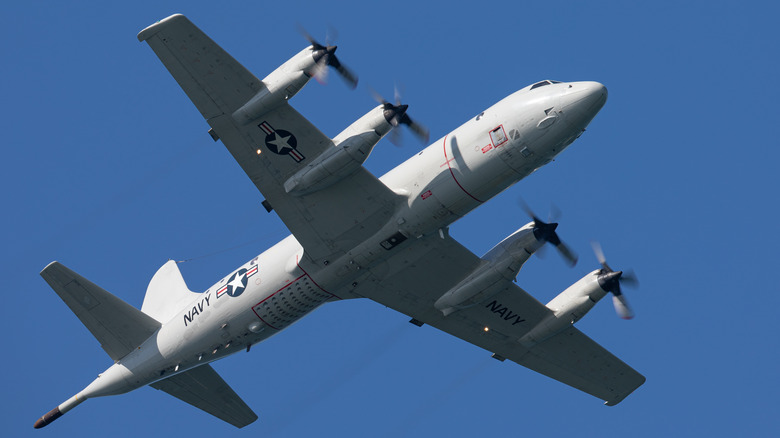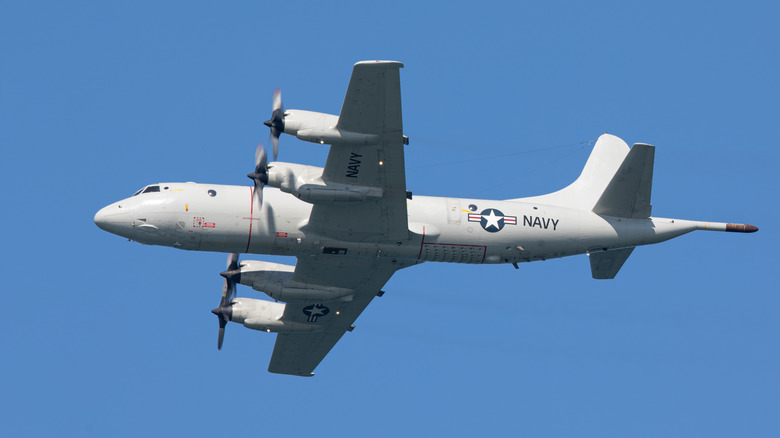The Legendary U.S. Surveillance Plane That Flew For Over 50 Years
During Cold War between the Soviet Union and United States, submarines became a vital tool used by both sides. Subs, especially nuclear powered models, could stay hidden underneath the surface of waters all over the world for long periods of time. Soviet nuclear submarines made famous by pieces of pop culture history like those in Tom Clancy's "The Hunt for Red October" were a real threat. A submarine was capable of not only spying and gathering info, it could act as a weapons platform in the event of nuclear war.
Instead of relying on Sean Connery to have a change of heart and defect with a submarine, rendering it combat ineffective like the book and movie, the United States needed to develop equipment to detect submarines and protect its shorelines. In the late 1950s and early 1960s, engineers at Lockheed (now Lockheed Martin) took that challenge and developed a submarine hunter aircraft that ended up being significantly more useful and long-lasting than they initially thought. That plane was the Lockheed P-3 Orion.
From the Cold War to now
When the P-3 Orion first entered service in 1962, its initial mission was to detect and intercept Soviet submarines. Given the fact that nuclear war did not break out between Soviet and American subs, it's safe to say the first mission was a success. The first time the public became aware of the new sub-hunter was during the Cuban Missile Crisis in 1962, when it participated in the naval blockade of Cuba alongside aircraft carriers like the U.S.S. Intrepid.
The P-3 served all throughout the Cold War, and due to the versatility of its airframe, it was easily adapted to a variety of missions. According to Lockheed Martin, it was used in real-time surveillance and spy roles and scouting roles. In more recent years, the Orion was used stateside during disasters like Hurricane Katrina to relay information to relief crews on the ground. Due to its relatively small size and ability to fly at lower speeds than jet-powered aircraft, Orions have been used in forest fire-fighting efforts. The Orion has also excelled at keeping shipping lanes around the Horn of Africa free from pirates and preventing drug runners from entering the United States through the waters near Mexico.
About 60 years after the aircraft first took off, it's still in active service today in 17 different countries and is still in the process of being upgraded and adapted to different missions.

